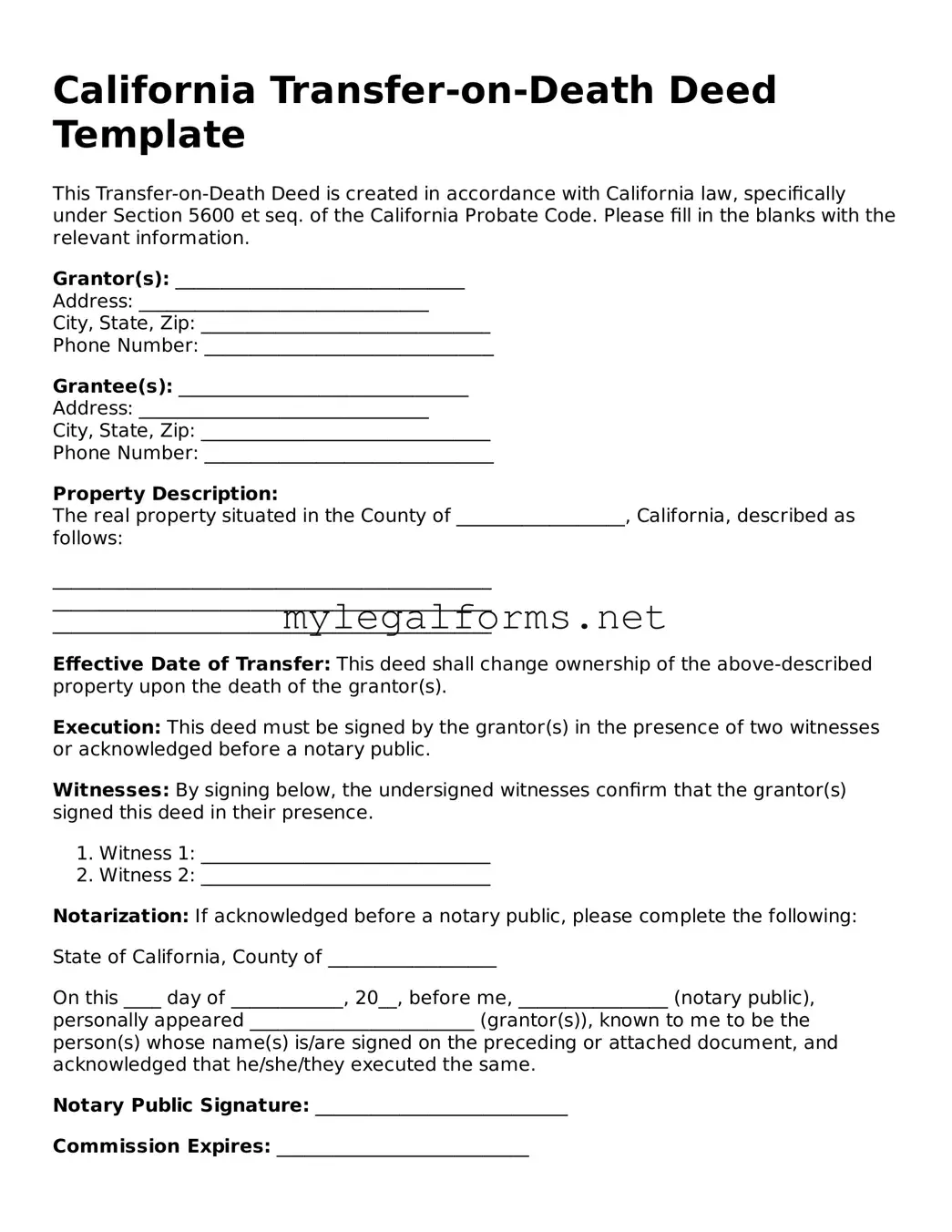California Transfer-on-Death Deed Template
This Transfer-on-Death Deed is created in accordance with California law, specifically under Section 5600 et seq. of the California Probate Code. Please fill in the blanks with the relevant information.
Grantor(s): _______________________________
Address: _______________________________
City, State, Zip: _______________________________
Phone Number: _______________________________
Grantee(s): _______________________________
Address: _______________________________
City, State, Zip: _______________________________
Phone Number: _______________________________
Property Description:
The real property situated in the County of __________________, California, described as follows:
_______________________________________________
_______________________________________________
_______________________________________________
Effective Date of Transfer: This deed shall change ownership of the above-described property upon the death of the grantor(s).
Execution: This deed must be signed by the grantor(s) in the presence of two witnesses or acknowledged before a notary public.
Witnesses: By signing below, the undersigned witnesses confirm that the grantor(s) signed this deed in their presence.
- Witness 1: _______________________________
- Witness 2: _______________________________
Notarization: If acknowledged before a notary public, please complete the following:
State of California, County of __________________
On this ____ day of ____________, 20__, before me, ________________ (notary public), personally appeared ________________________ (grantor(s)), known to me to be the person(s) whose name(s) is/are signed on the preceding or attached document, and acknowledged that he/she/they executed the same.
Notary Public Signature: ___________________________
Commission Expires: ___________________________
By completing this Transfer-on-Death Deed, you ensure that the designated heir(s) will automatically inherit your property, simplifying the transfer process and avoiding probate. Always consult a legal professional for personalized advice.
